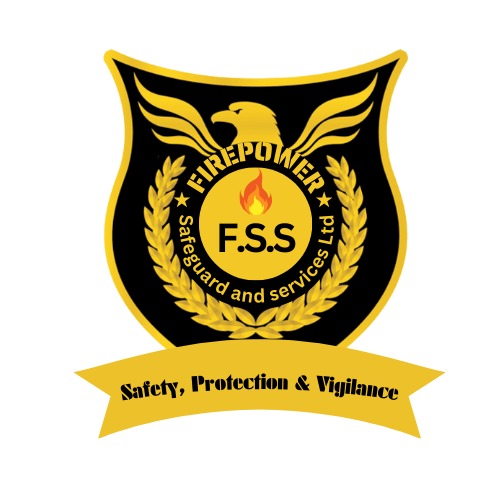COURSE SUMMARY
FIREPOWER SAFEGUARD AND SERVICES LTD
Safety, Protection, And Vigilance
<- Back to homepage
CYBERSECURITY TRAINING PROGRAM:
Program Overview:
This program provides hands-on training in cybersecurity, covering essential concepts, techniques, and best practices to protect individuals, organizations, and governments from cyber threats.
Program Objectives:
- Understand the cybersecurity landscape and threats.
- Develop skills to detect, prevent, and respond to cyber attacks.
- Learn risk management and mitigation strategies.
- Master security technologies and tools.
- Prepare for industry-recognized certifications.
DISASTER MANAGEMENT TRAINING PROGRAM
A disaster management training program equips individuals and organizations with the knowledge and skills necessary to prepare for, respond to, and recover from disasters. Here's an overview:
Objectives:
- Enhance disaster preparedness and response capabilities.
- Reduce the impact of disasters on communities.
- Build resilience.
Key Components
- Disaster risk assessment and mitigation.
- Emergency planning and response.
- Search and rescue operations.
- First aid and medical response.
- Communication and coordination.
- Relief and recovery operations.
- Community engagement and participation.
CRIME INVESTIGATION PROGRAM
A Crime Investigation program equips individuals with the knowledge and skills necessary to conduct thorough and effective investigations. Here's an overview:
Program Objectives:
- Develop investigative skills and techniques.
- Understand criminal law and procedures.
- Analyze evidence and forensic science.
- Enhance critical thinking and problem-solving.
- Foster effective communication and collaboration.
Key Components:
- Criminal Law and Procedures.
- Investigative Techniques (interviews, surveillance, etc.).
- Forensic Science (DNA, fingerprints, etc.).
- Crime Scene Investigation.
- Evidence Collection and Analysis.
- Cybercrime Investigation.
- Intelligence Gathering and Analysis.
- Courtroom Procedures and Testimony.
SECURITY SUPERVISOR TRAINING PROGRAM:
A Security Supervisor Training Program equips individuals with the knowledge, skills, and competencies necessary to effectively supervise security personnel and operations. Here's an overview:
Program Objectives:
- Develop leadership and management skills.
- Enhance security knowledge and awareness.
- Improve communication and interpersonal skills.
- Foster critical thinking and problem-solving.
- Ensure compliance with laws and regulations.
Key Components:
- Security Management Principles.
- Leadership and Team Management.
- Communication and Conflict Resolution.
- Risk Assessment and Mitigation.
- Emergency Response and Crisis Management.
- Security Technologies and Systems.
- Law and Regulations (local, national, international).
- Ethics and Professionalism.
FIRST AID TRAINING PROGRAM
A First Aid Training Program equips individuals with the knowledge and skills necessary to provide immediate care and assistance in emergency situations. Here's an overview:
Program Objectives:
- Recognize and respond to medical emergencies.
- Provide basic life support and first aid.
- Use lifesaving techniques and equipment.
- Prevent further harm and promote recovery.
Key Components:
- Basic Life Support (BLS).
- Cardiopulmonary Resuscitation (CPR).
- Automated External Defibrillator (AED) training.
- Wound care and bleeding control.
- Fracture and sprain management.
- Medical emergencies (e.g., heart attack, stroke).
- Environmental emergencies (e.g., heat stroke, hypothermia).
FIRE SAFETY TRAINING PROGRAM
A Fire Safety Training Program equips individuals with the knowledge and skills necessary to prevent, detect, and respond to fires effectively. Here's an overview:
Program Objectives:
- Identify fire hazards and risks).
- Prevent fires through safety measures.
- Recognize and respond to fires promptly.
- Evacuate safely and efficiently.
- Use firefighting equipment and techniques.
Key Components:
- Fire chemistry and behavior.
- Fire classification and identification.
- Fire prevention and risk assessment.
- Fire detection and alarm systems.
- Fire extinguishers and equipment.
- Evacuation procedures and emergency planning.
- Firefighting techniques and strategies.
